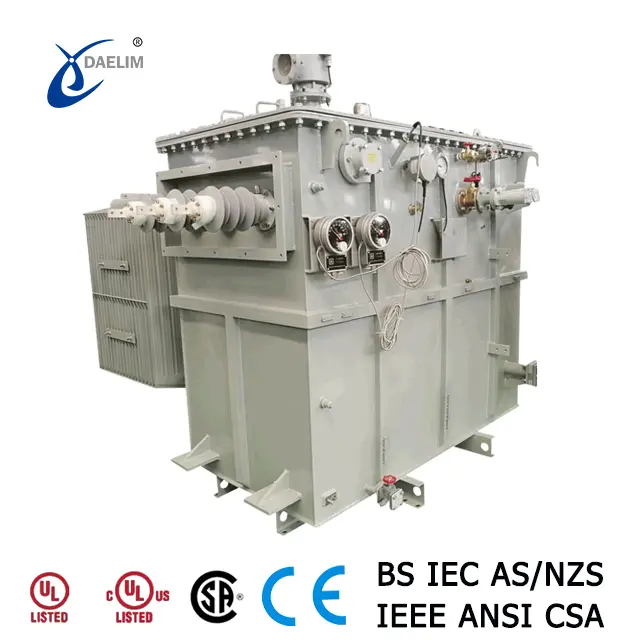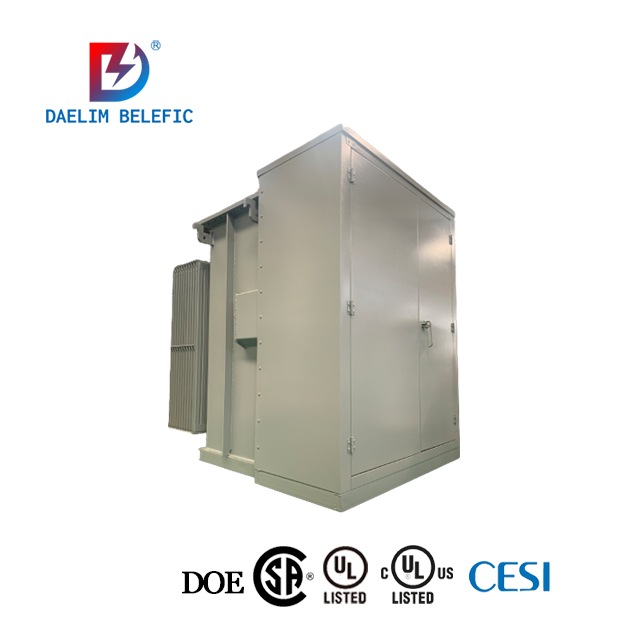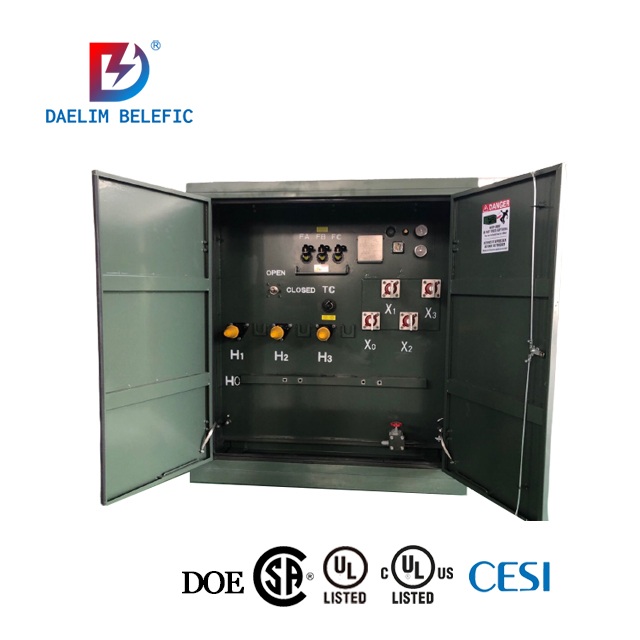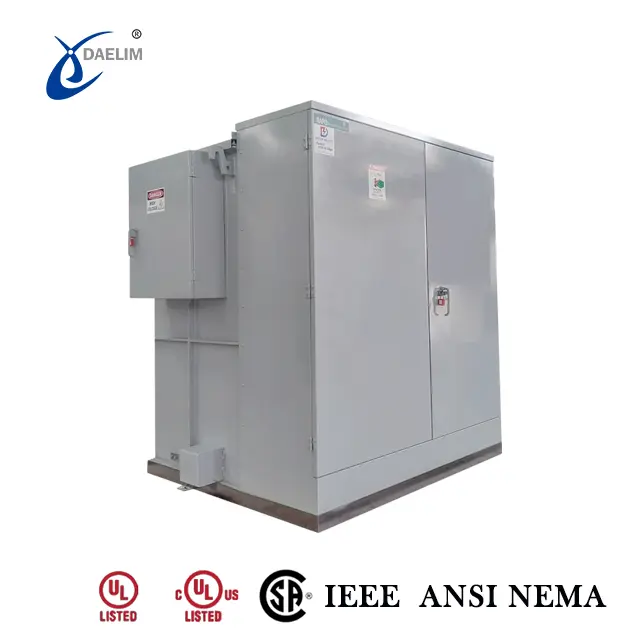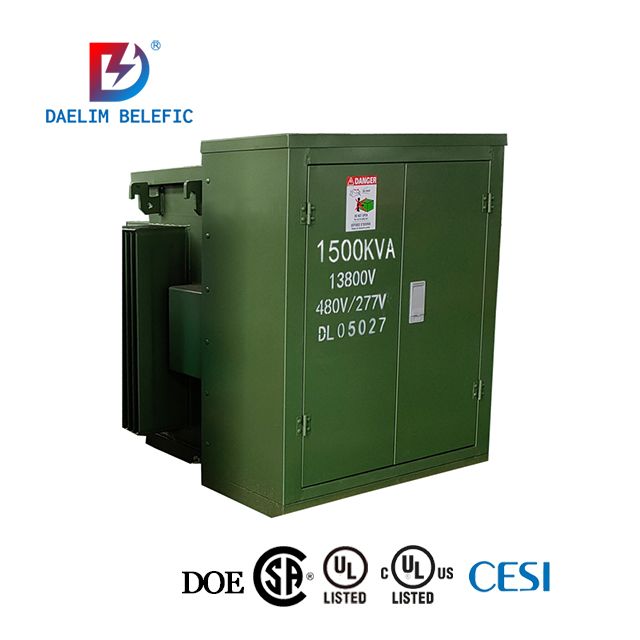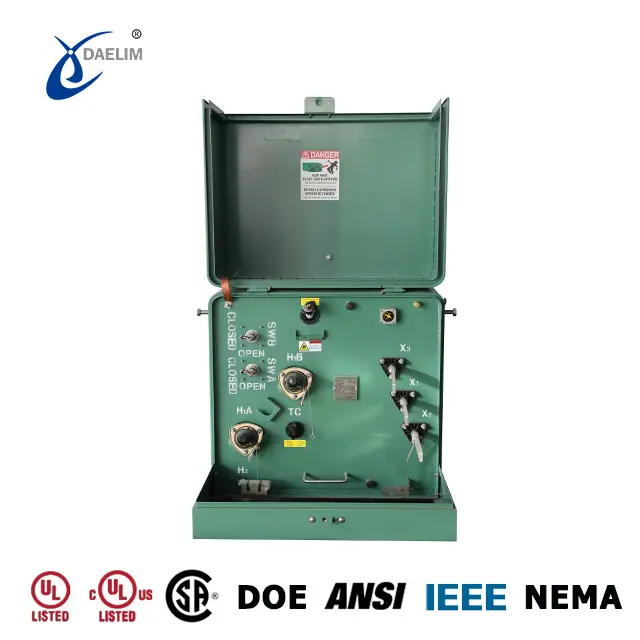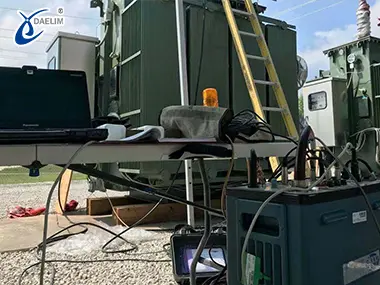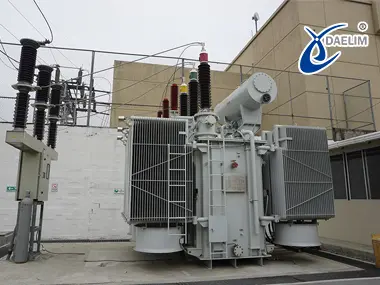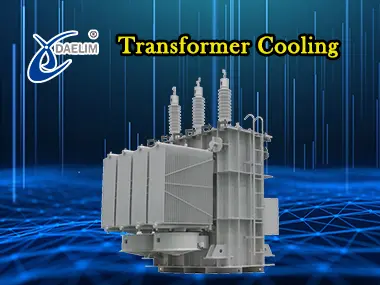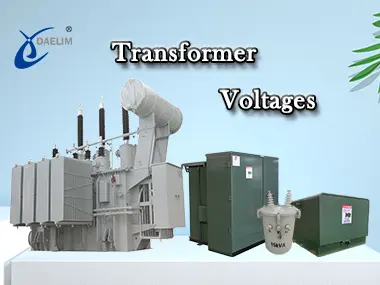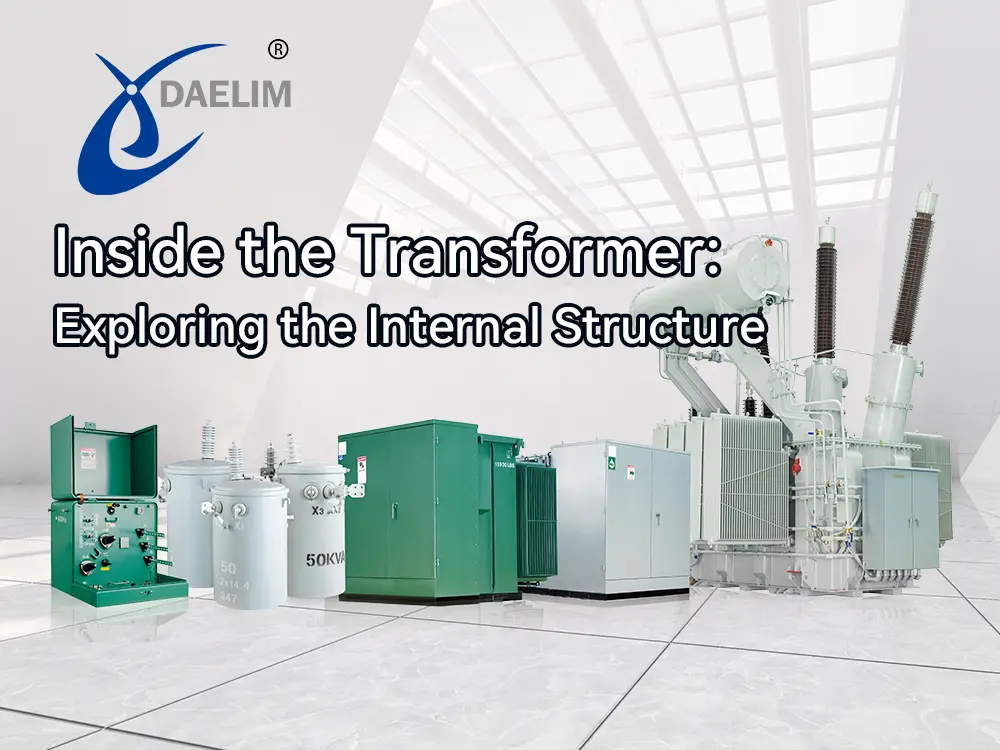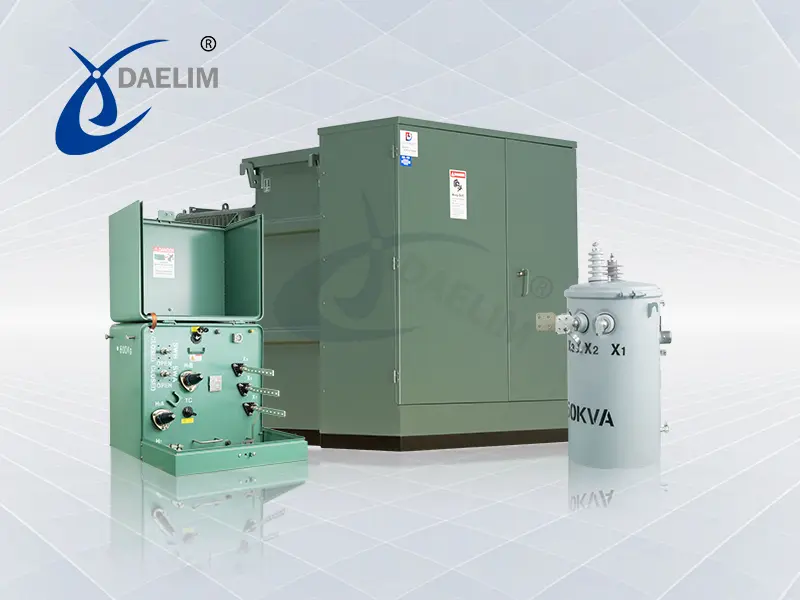Introduction to Transformer Inspection
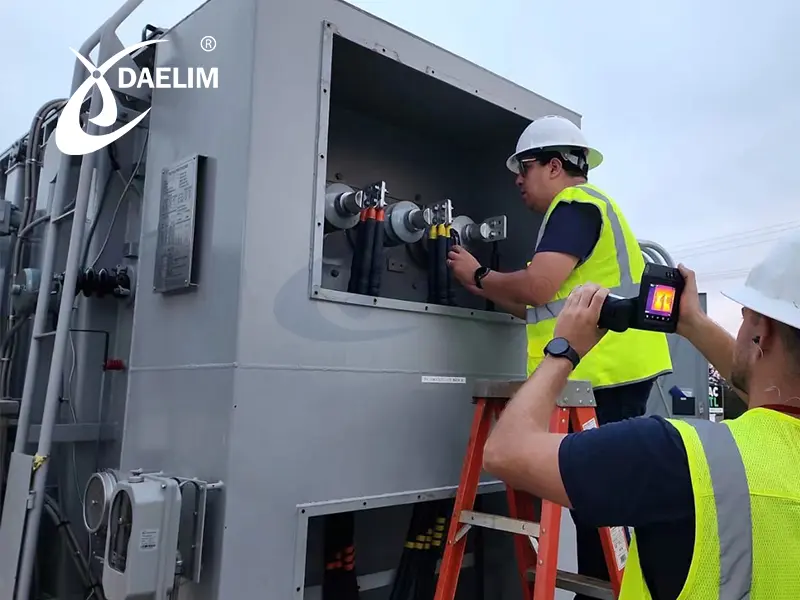
If you are trying to get a job in the transformer industry or a technician who has just joined an electricity utility company. Then transformer inspection is something you will come across quite frequently. It is best you know and understand all the basics of transformer inspection.
Transformer inspection is done on every stage of its construction, during manufacturing & assembly, before delivery, after installation, and during the entire useful life of the electrical transformer.
So we have developed this comprehensive guide on what is transformer inspection, why it is important, its different types, and advanced tools involved in this field.
Contact Daelim TransformerWhat is transformer inspection?
Transformer inspection is a process where you perform a thorough examination of an electric transformer. You examine different components for different aspects. Examine them for working, efficiency, and potential problems, ensuring all parts work with optimal performance.
There are several techniques, tools, and transformer inspection procedures that you can use. As this transformer inspection is done during all the stages of transformer life, so it's a continuous job. With advancement in transformer design and development of new tools of inspection, you are in a continuous process of learning and practicing the latest transformer inspection methods.
Read more:What inspections are required before the transformer is put into operation?
Why is Transformer Inspection Important?
With increasing world population, new human settlements are setting up and so does the installation of transformers. This has developed a never ending demand of inspectors for transformer inspection, but why this transformer inspection is so important.
Minimal Downtime
As these electrical transformers play such an important role in our daily life, any downtime of these will disrupt our daily activity. Performing proper transformer inspection will help you to identify issues early, before they can cause transformer blow and potential downtime of a few hours.
Reduced Repair Cost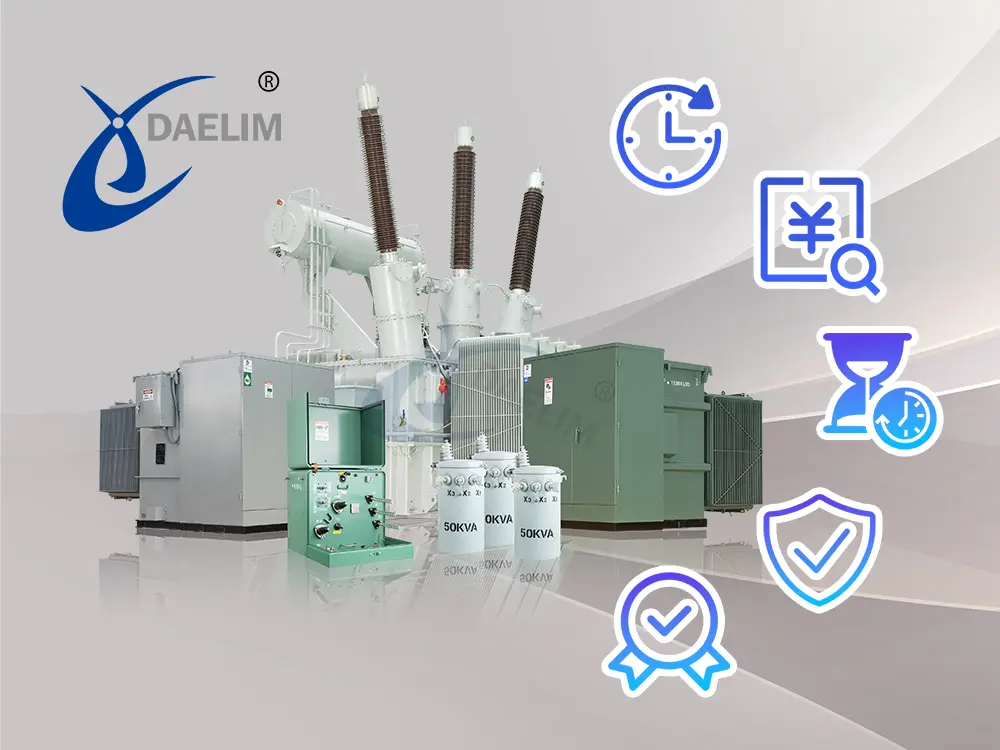
If you can identify the issue with your transformer early, then you can repair the damaged or troubling part or remove the factor that can cause parts to go bad. This activity will clearly reduce your repair cost and time.
You may enjoy:How Long Does It Take To Repair A Transformer?
Extended Life of Transformer
Continuous transformer inspection and timely replacement of parts that need to be replaced after a fixed interval will increase your transformer life many fold. Transformers are expensive devices and as they are installed in an open atmosphere, most of the time. They have parts that need to be replaced after specific intervals. So timely inspection and maintenance can increase transformer life.
Learn more:Extend Life by 1.5 Times with New Insulating Oil!
Safety
You need to perform timely transformer inspection to keep your transformer, surrounding area, and associated electrical equipment safe. All types of transformers are powerful, and their failure can have consequences far beyond themselves. So, you need to perform transformer inspection as and when required.
Regulation Compliance
Transformer inspection is not an activity and you can perform at your own freewill. There are certain rules and regulations, mostly based on regional laws. These laws force you to perform this activity in a timely manner. You need to perform a transformer inspection as per the regional laws. You also need to keep a transformer inspection report of your inspection to show to authorities.
Key Areas to Focus During Inspection
It mostly depends on the company recommendation on which parts you should inspect and test and when to inspect those parts. But there are some key parts that you should inspect on every major inspection if you want to avoid any major accident.
- First thing to inspect for a transformer that is already installed in the earthing and grounding of the transformer. This makes sure you will not get electric shock when you reach out for the transformer. This also makes sure that the transformer is working properly.
- Second thing you should inspect on every visit is the busing and connections of the transformer. This makes sure that the transformer has a well insulated connection with incoming and outgoing electrical wire.
- After bushing, you need to make sure that all other electrical parts like load tap changer and protection relay are securely attached and working properly.
- When inspecting you need to thoroughly inspect the tank for all types of damages like rust, dust, leakage and overheating. This makes sure that all inside parts are well insulated from the environment.
- Breather makes sure the transformer breathes clean air and to ensure that, you need to inspect and replace if needed breather on every inspection visit.
- As transformers produce a lot of waste heat, you need to make sure that your transformer temperature indicator is accurately monitoring temperature.
- Different transformers use different cooling mechanisms, so you need to make sure that your transformer cooling fan, oil pump, or head exchanger, whatever it has, is working properly.
Types of Transformer Inspections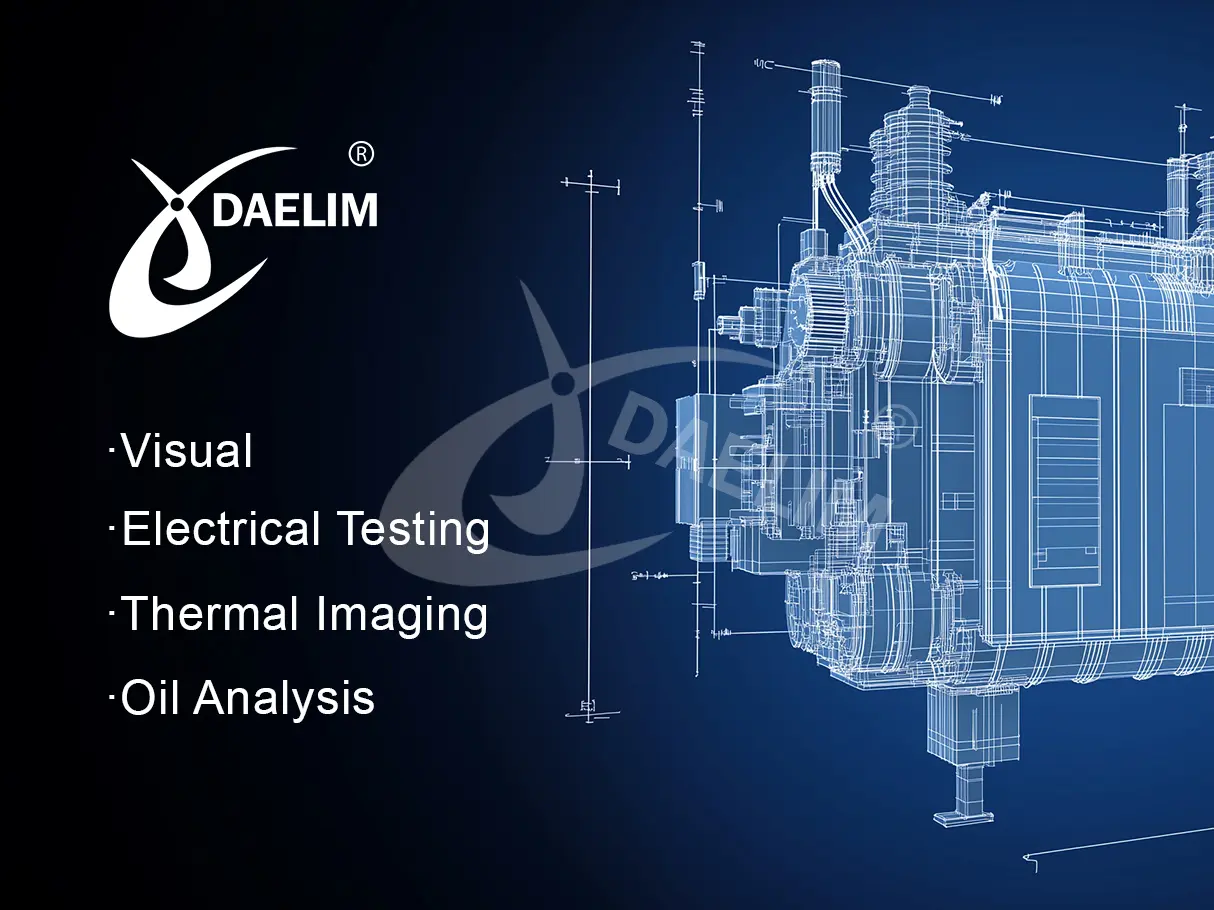
There are four main types of transformer inspection that you can perform on your transformer. Each one of these methods are used to inspect different aspects and different parts.
Transformer Visual Inspection
First thing that you can do in a transformer inspection is to do a transformer visual inspection of its main visible parts. If your transformer is already in service and is installed on a site. Then you can do a transformer visual inspection of the transformer tank inspection, transformer bushing, breather, and its electrical connections.
When doing a transformer visual inspection, you will be looking for cracks on the transformer tank and bushing. Similarly you will be having a detailed inspection of all joints for any type of corrosion. You might observe crack, corrosion, oil leak, and overheating from any side of the transformer tank.
Minor issues include cleanliness or loosen wires. It is highly recommended to use a flashlight to observe different parts of transformers in detail.
Electrical Testing
You need to perform electrical testing of the transformer to ensure it is fit to work. This testing is done before and after the transformer installation to ensure correct electrical connections. There are three main electrical tests that you need to perform on a transformer before its installation. These tests are also performed during the routine maintenance of the transformer.
Learn more:How to test a power transformer?
Insulation Resistance Test
To inspect the quality of the transformer insulation, you need to perform an insulation resistance test. As its name says, it’s a transformer testing to check the transformer insulation resistance. As you know the purpose of placing the insulation between winding and core is to stop the flow of current from winding to core.
The insulation material resists the flow of current and this is how you can check its quality or condition. Higher the resistance you get on testing higher is the quality or better is the condition of the insulation. This transformer testing helps you detect deterioration, contamination or moisture in insulation materials. This also helps you ensure that the insulation system has maintained its dielectric strength.
To perform this insulation resistance test, you need to take a specialized instrument called megohmmeter. It is an instrument very similar to an ohmmeter but can measure the resistance of insulation material very accurately.
First you need to apply very high DC voltage to the transformer winding and core assembly and then use a megohmmeter to check the assembly resistance. You will obtain the reading in megaohm and you need to keep a transformer inspection report of this.
You need to perform this transformer testing before installation and when the assembly of winding and core is completed. This is done to check that the newly assembled winding and core are good enough for working and there is no short circuit in the assembly.
It's best practical that you perform this test of equal interval throughout the transformer life. A continuous high value shows good quality insulation and continuous decreasing resistance value shows a weakening insulation that might need replacement soon.
Winding Resistance Test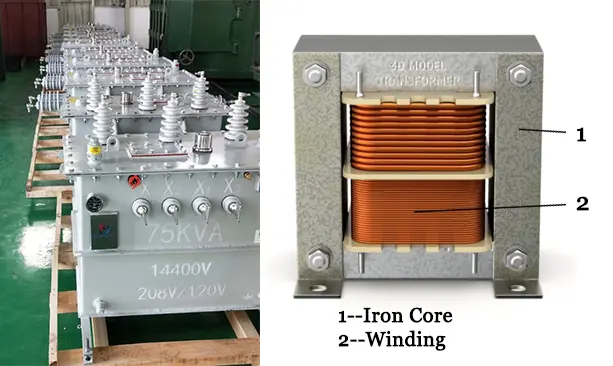
You need to perform a transformer winding resistance test as soon as the winding procedure is completed. This transformer testing is performed so you check the winding for faults like poor connection, short circuit, broken strands, loose connections, high contact resistance and imbalance in winding. You can also perform this test during the scheduled inspection of the transformer to check for any early signs of winding degradation.
You can perform this test on any transformer winding by introducing a small DC current in your transformer winding. Apply the DC current and measure the resistance of the winding using any micro ohmmeter. You can also use the bridge methods to check your transformer winding condition.
You need to perform this transformer testing several times across different sections of the winding. You should be getting a consistent reading across the identical winding. If you are getting any significant deviations, then this indicates an issue with your transformer winding, such as shorted turns or high-resistance joints.
Turn Ratio Testing
The transformer you have is either a step up or a step down type transformer. You can check this or can check whether the turn ratio of your transformer is as per its name plate or note using this transformer turn ratio testing.
This test is done as soon as winding assembly is completed and is done to check the turn ratio between primary and secondary winding. You can perform this test by introducing a low AC voltage into the primary winding and checking the output voltage from the secondary winding using a standard voltmeter.
You need to compare the ratio of primary and secondary voltage with the turn ratio of primary and secondary winding. If you measure ratio matches with the ratio mentioned on the name plate provided by the manufacturer then your transformer is completely perfect.
If the measure ratio shows deviation from name plate ratio then there might be a manufacturing defect or your transformer winding might have been damaged or have an incorrect tap changer setting.
Thermal Imaging
Thermal imaging is an inspection method that you use during the entire life of a transformer. The best thing about this method is that it can be used when your transformer is working. There are several devices available in the market that you can use to take thermal images of your transformer.
Any device will give you an image of the transformer body or tank. The image will be made of several colors. Each color you see indicates a different temperature zone in the transformer body. By this, you can identify the high temperature zone in the transformer body. This can indicate overheating or uneven load distribution. Detecting overheating early surely helps avoid big transformer blows.
Pad mounted transformers offered by Daelim have a special IR window. The IR window lets infrared light pass through it and You can use any thermal imaging tool to have a thermal image of the transformer. This is the most easy way to have a thermal image of a pad mounted transformer and due to this ease, our pad mounted transformers are in high demand.
Oil Analysis
If you have an oil type transformer, then you need to inspect and test the transformer oil in every schedule maintenance. As oil is the main medium for heat transfer in these types of oil, so you need to make sure that its quality remains good during the entire life of the transformer.
When inspecting the transformer oil, you need to do the moisture content measurement to ensure that there is no water leaking into the transformer and mixing into oil. Dissolved gas analysis will help you detect any dissolved gasses that were produced due to overheating of winding. You also need to perform oil acidity testing to make sure the oil has not degraded and can be used till next scheduled maintenance.
Learn more about :How to analysis of gases and check oil level in transformer ?
Tools and Techniques for Advanced Inspections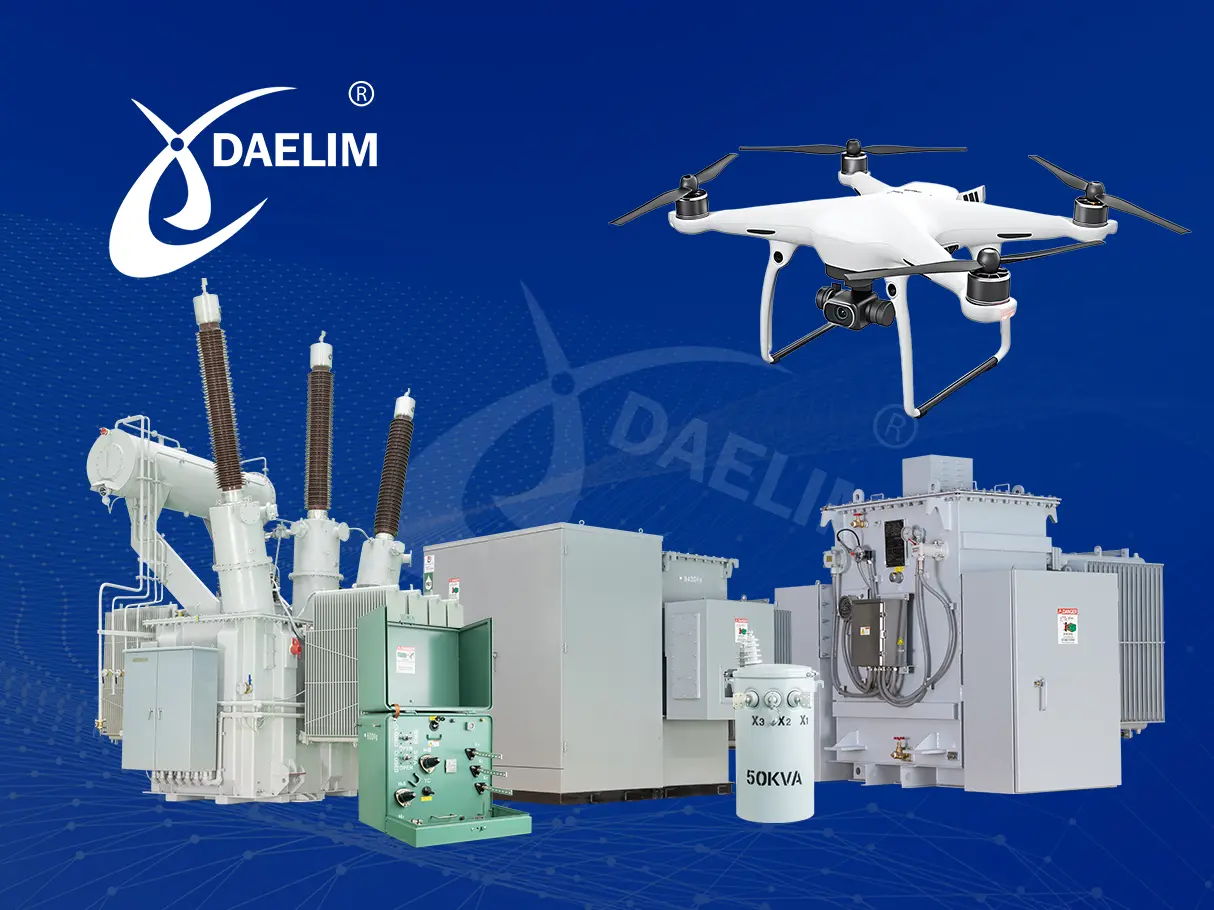
Advancement in electronics and sensor technology has enabled companies to develop transformers whose inspection needs minimum effort. Some advancements in this field are as follows.
- Small and compact design and development of transformers enable you to do onsite inspection and test of all electrical parameters and to check insulation quality.
- Digital monitoring systems with help of sensors enable you to have real time data of the transformer right into your device or smartphone.
- Introduction robots and drones in the field ensure that visual inspection and inspection of hazardous conditions can be done safely.
Conclusion
Transformer inspection is a highly important and continuous task that is performed during all stages of transformer manufacturing and during its entire useful life. Companies usually issue their own transformer inspection checklist, test, and techniques. During the schedule inspection it recommends checking all key components like grounding, bushing, connection, tank, and other key components.
Follow Up
Regular transformer inspection is a key aspect of long lasting transformer life. We at Daelim Transformer not only offer transformers to our client but also offer all related services including transformer inspection and maintenance. Our team of highly skilled electrical technicians ensure that all transformers installed by Daelim Transformer remain safe and highly efficient throughout their useful life.
If you have any questions related to this, Contact Us and our team will talk you through this.
Related Products
Related Article
How To Check Transformer Primary And Secondary?
Transformers are essential for regulating electricity in homes and industries. Proper inspection of transformer windings—primary and secondary—is crucial for ensuring safety and performance. Tools like multimeters and insulation testers help detect issues such as open circuits, short circuits, and insulation breakdowns. Regular maintenance prevents catastrophic failures, enhances safety, and extends transformer life, ensuring reliable operation across global installations.
How Long Does It Take To Replace A Transformer
Replacing a transformer involves several steps, including inspection, equipment transportation, removal of the old transformer, and installation of the new one. Smaller transformers can be replaced in a few hours, while larger industrial or utility transformers may take days or even weeks. Factors such as transformer type, site conditions, weather, and availability of parts can influence replacement time. Proper planning ensures efficiency.
What is Transformer Cooling and How is it done?
Transformer cooling is essential for managing waste heat generated during electricity regulation. There are several cooling methods, including natural air, forced air, oil-based systems, and combinations of oil and water cooling. The choice of method depends on transformer type, capacity, environmental conditions, and budget. Effective cooling ensures transformer safety, performance, and reliability. Daelim offers high-quality cooling systems for various transformer specifications globally.
The Ultimate Guide to Transformer Voltages
Transformers are essential for regulating voltage in power systems, ensuring safe and efficient electricity distribution. They come in various voltage ranges, including low, medium, high, and extra-high voltage for different applications, from residential use to heavy industrial operations. Understanding transformer voltages—such as 240V, 480V, 600V, and renewable energy-specific voltages like 600V and 800V—is crucial for optimizing performance and preventing equipment damage in sectors like manufacturing and energy.
Inside the Transformer: Exploring the Internal Structure
Transformers are complex devices with a core, windings, and cooling systems that regulate electricity efficiently. Their internal structure varies by type, such as oil-filled or dry transformers, featuring specific winding styles (e.g., helical, disc) and cooling mechanisms (e.g., oil-forced, air-natural). Design depends on power ratings, voltage, and application, ensuring optimal performance in power generation and distribution.
Introduction to Auxiliary Transformers
Auxiliary transformers are specialized transformers designed to power auxiliary equipment in power plants, substations, and renewable energy systems. They step down electricity for safe use in sensitive systems, available in dry, oil-immersed, stationary, and portable types. Key features include compact design, efficient cooling, and protective mechanisms, ensuring reliable operation in diverse applications.

